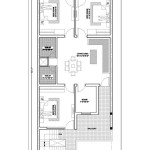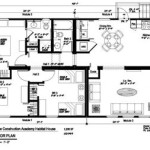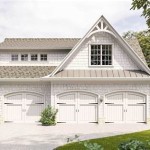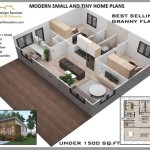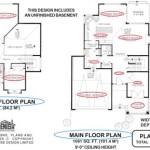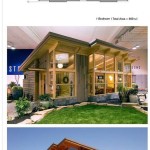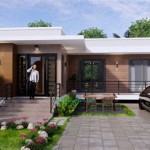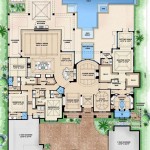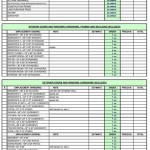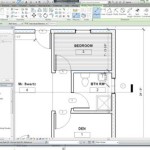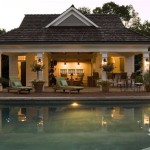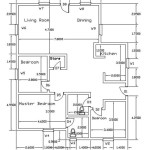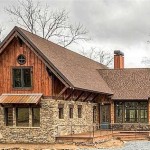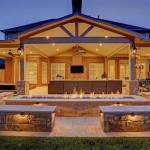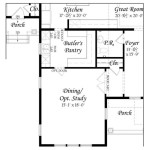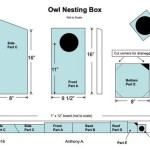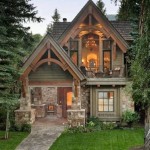Low Country House Plans With Wrap Around Porch: A Detailed Exploration
Low Country house plans, often characterized by their expansive wrap around porches, represent a distinctive architectural style steeped in Southern tradition. This architectural design prioritizes both aesthetic appeal and functional living, offering homeowners a unique blend of indoor and outdoor spaces. The style, deeply rooted in the coastal regions of the Southeastern United States, is specifically designed to mitigate the effects of hot, humid climates while simultaneously fostering a strong connection with the surrounding natural environment.
The hallmark of a Low Country house plan is undoubtedly the wrap around porch. This feature, more than just a decorative element, serves as an extended living area, providing shade and ventilation crucial for comfort in warmer climates. The porch often becomes a focal point for relaxation, entertainment, and social gatherings, effectively blurring the lines between indoor and outdoor living. Beyond the porch, Low Country designs often incorporate features such as elevated foundations, large windows, and open floor plans to maximize airflow and natural light. These elements collectively contribute to a comfortable and inviting living environment.
The architectural style draws inspiration from a variety of sources, including English colonial architecture, Caribbean influences, and regional vernacular building traditions. This fusion of styles results in a unique aesthetic that is both elegant and practical. The materials used in Low Country construction often reflect the local environment, with wood, brick, and stucco being common choices. These materials not only contribute to the visual appeal of the homes but also provide durability and resilience against the elements.
Key Features of Low Country House Plans
Several defining features distinguish Low Country house plans from other architectural styles. These elements are carefully integrated to create homes that are both aesthetically pleasing and functionally well-suited to their environment.
The Wrap Around Porch: As previously mentioned, the wrap around porch is the most recognizable feature of a Low Country home. Typically, the porch extends around at least two sides of the house, providing ample outdoor living space. The porch is often covered by a wide roof overhang, offering protection from the sun and rain. The size and design of the porch can vary, ranging from simple, functional spaces to elaborate, multi-level structures.
The porch is often furnished with comfortable seating, such as rocking chairs or porch swings, creating a welcoming and inviting atmosphere. The orientation of the porch is also carefully considered, often facing south or west to take advantage of prevailing breezes and maximize views. The porch may also include outdoor kitchens or dining areas, further enhancing its functionality as an extension of the home's living space.
Elevated Foundations: Elevated foundations, also known as pier and beam foundations, are common in Low Country house plans. This design feature raises the main living area of the house above ground level, providing several benefits. Firstly, it helps protect the house from flooding, a significant concern in coastal areas. Secondly, it allows for better ventilation under the house, reducing moisture build-up and preventing rot. Thirdly, it can provide additional storage space beneath the house.
The elevated foundation is typically constructed using wood or concrete piers, which support the weight of the house. The space between the piers is often left open, allowing for airflow. In some cases, the space may be enclosed to create a crawl space or even a finished basement. The height of the foundation can vary depending on the location and the specific needs of the homeowner.
Open Floor Plans: Open floor plans are another characteristic feature of Low Country house plans. This design approach eliminates or minimizes walls between the main living areas, such as the living room, dining room, and kitchen. This creates a more spacious and airy feel, promoting natural light and ventilation. Open floor plans also facilitate social interaction, making it easier for family members and guests to interact.
The open floor plan is often complemented by high ceilings and large windows, further enhancing the sense of spaciousness. The layout of the rooms is typically designed to maximize functionality and flow, with the kitchen often serving as the central hub of the home. The open floor plan can be adapted to suit a variety of lifestyles, from formal entertaining to casual family gatherings.
Materials and Aesthetics of Low Country Homes
The materials used in the construction of Low Country homes play a significant role in their overall aesthetic and durability. These materials are often chosen for their ability to withstand the harsh coastal environment while also contributing to the distinctive charm of the architectural style. The aesthetic of these homes is often characterized by a blend of classic elegance and rustic simplicity.
Wood: Wood is a primary building material in Low Country homes, often used for framing, siding, and interior finishes. Wood offers both structural strength and aesthetic appeal. Common types of wood used in Low Country construction include pine, cedar, and cypress. These woods are chosen for their durability, resistance to insects, and ability to withstand moisture.
Wood siding is a popular choice for Low Country homes, providing a classic and timeless look. Wood can also be used for trim, doors, and windows, adding to the overall character of the house. Inside the home, wood is often used for flooring, cabinetry, and furniture, creating a warm and inviting atmosphere. The use of natural wood tones is common, although painted finishes are also popular.
Brick: Brick is another common building material in Low Country homes, often used for foundations, chimneys, and exterior walls. Brick offers durability, fire resistance, and a classic aesthetic. The color and texture of the brick can vary, ranging from traditional red brick to more rustic, weathered styles.
Brick foundations are often used in Low Country homes, providing a solid and stable base for the structure. Brick chimneys add to the architectural character of the house and provide a functional element for fireplaces and heating systems. Brick can also be used as an exterior cladding material, providing a durable and low-maintenance finish. The use of brick can be combined with other materials, such as wood or stucco, to create a visually interesting facade.
Stucco: Stucco is a cement-based plaster that is often used as an exterior finish in Low Country homes. Stucco provides a smooth, textured surface that is both durable and aesthetically pleasing. Stucco is available in a variety of colors and can be applied in different textures to create a unique look. It is often used in conjunction with wood and brick to create a balanced and harmonious exterior.
Stucco is a popular choice for Low Country homes because it is relatively low-maintenance and can withstand the harsh coastal environment. It is also a versatile material that can be adapted to suit a variety of architectural styles. Stucco can be painted or stained to achieve different looks, and it can be easily repaired if damaged. The use of stucco contributes to the overall elegance and sophistication of Low Country homes.
Adapting Low Country House Plans for Modern Living
While Low Country house plans are rooted in tradition, they can be easily adapted to suit the needs of modern living. By incorporating contemporary features and technologies, homeowners can enjoy the charm and character of a Low Country home while also benefiting from the conveniences of modern design. This often involves integrating modern amenities seamlessly into the traditional framework of the architectural style.
Modern Kitchens and Bathrooms: Modern kitchens and bathrooms can be seamlessly integrated into Low Country house plans. Incorporating state-of-the-art appliances, sleek cabinetry, and luxurious fixtures can create functional and stylish spaces. Open kitchen designs can be combined with traditional elements, such as exposed beams or farmhouse sinks, to create a balance between modern and traditional aesthetics.
In bathrooms, incorporating features such as walk-in showers, soaking tubs, and custom vanities can enhance comfort and convenience. Natural materials, such as stone and wood, can be used to create a spa-like atmosphere. The use of modern lighting and ventilation systems can further enhance the functionality and comfort of these spaces.
Energy Efficiency: Modern Low Country house plans can be designed to be highly energy-efficient. Incorporating features such as energy-efficient windows and doors, insulation, and HVAC systems can significantly reduce energy consumption and lower utility bills. Solar panels can also be integrated into the design to generate renewable energy.
Properly insulating the walls, roof, and floors can help to maintain a consistent temperature inside the house, reducing the need for heating and cooling. Energy-efficient windows and doors can prevent drafts and reduce heat loss. The use of modern HVAC systems with programmable thermostats can further optimize energy efficiency. Incorporating these features can make a Low Country home both comfortable and environmentally friendly.
Smart Home Technology: Smart home technology can be integrated into Low Country house plans to enhance convenience, security, and energy efficiency. This can include features such as smart lighting, thermostats, security systems, and entertainment systems. These systems can be controlled remotely via smartphones or tablets, providing homeowners with greater control over their homes.
Smart lighting systems can be programmed to automatically adjust based on the time of day or occupancy, saving energy and enhancing security. Smart thermostats can be used to optimize heating and cooling based on individual preferences and occupancy patterns. Security systems can provide peace of mind by monitoring the home for intruders or other potential threats. Incorporating smart home technology can make a Low Country home more convenient, secure, and energy-efficient.

Plan 46666 Lowcountry With Full Wrap Around Covered Porch And Open Floor

House Plans With Wraparound Porches Porch Houseplans Com
House Plans With Wraparound Porches Porch Houseplans Com

Low Country House Plans Home For Southern Living Donald A Gardner Interactive Llc

Country House Plans With Front Porches

House Plans With Wraparound Porches Porch Houseplans Com

Summertime Lowcountry Plus Bonus Room House Plan Southern Living Plans
One Story Wrap Around Porch House Plans Floor Plan Designs Houseplans Com

Lowcountry Farmhouse House Plan 3 Bedroom Southern Design

Plan 83038 Country Home Design With Wrap Around Porch
Related Posts


